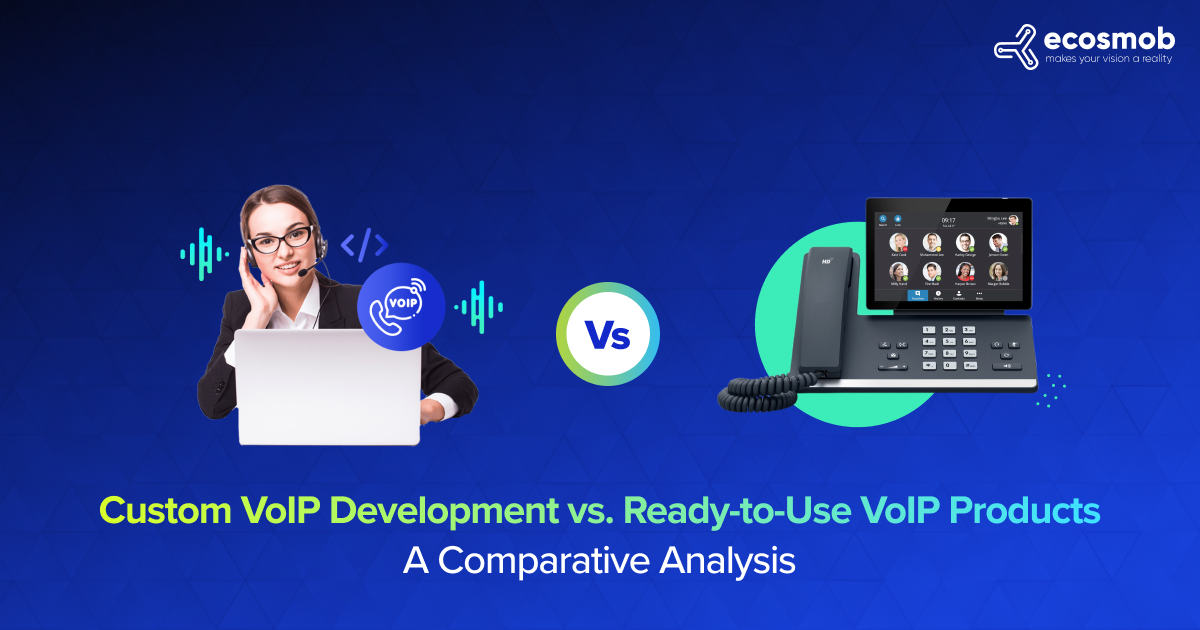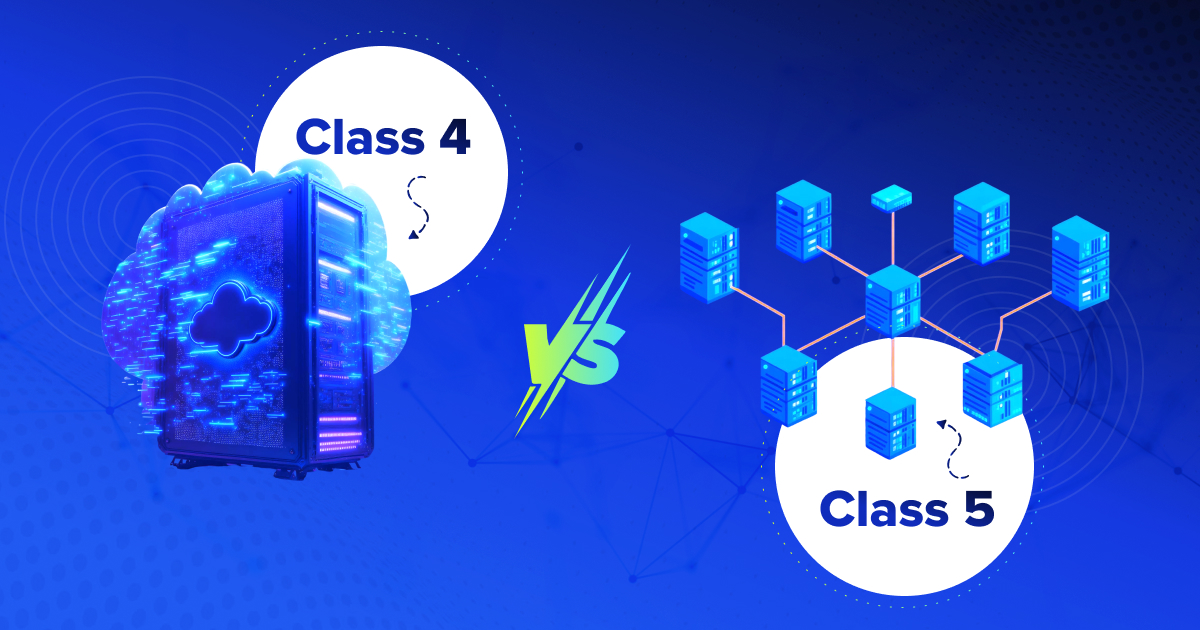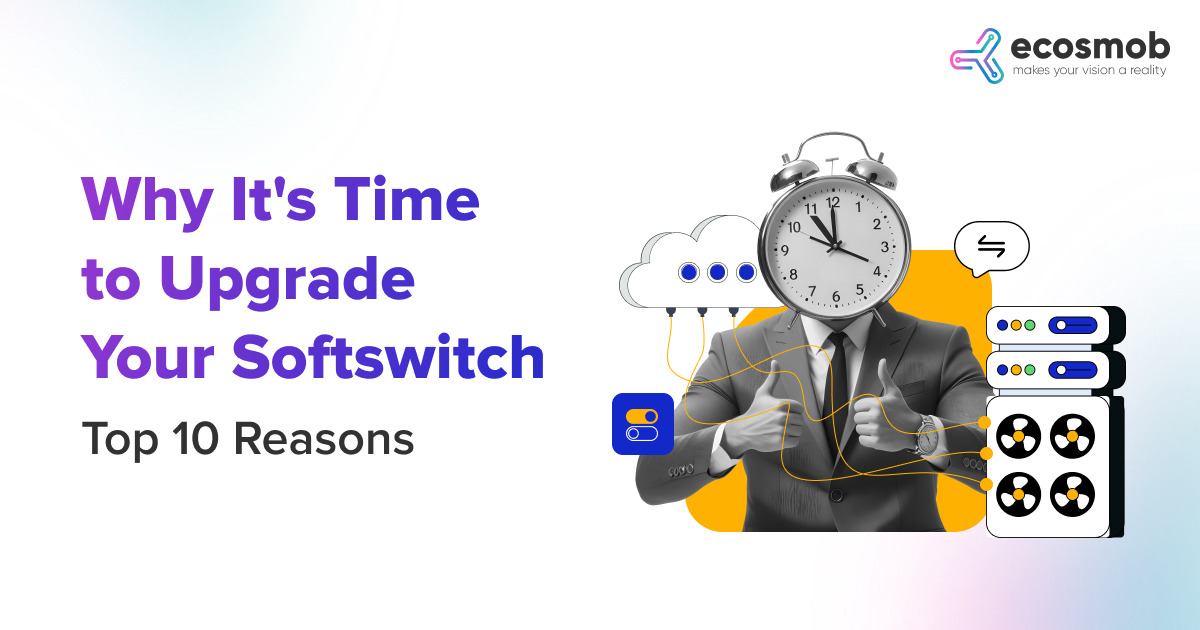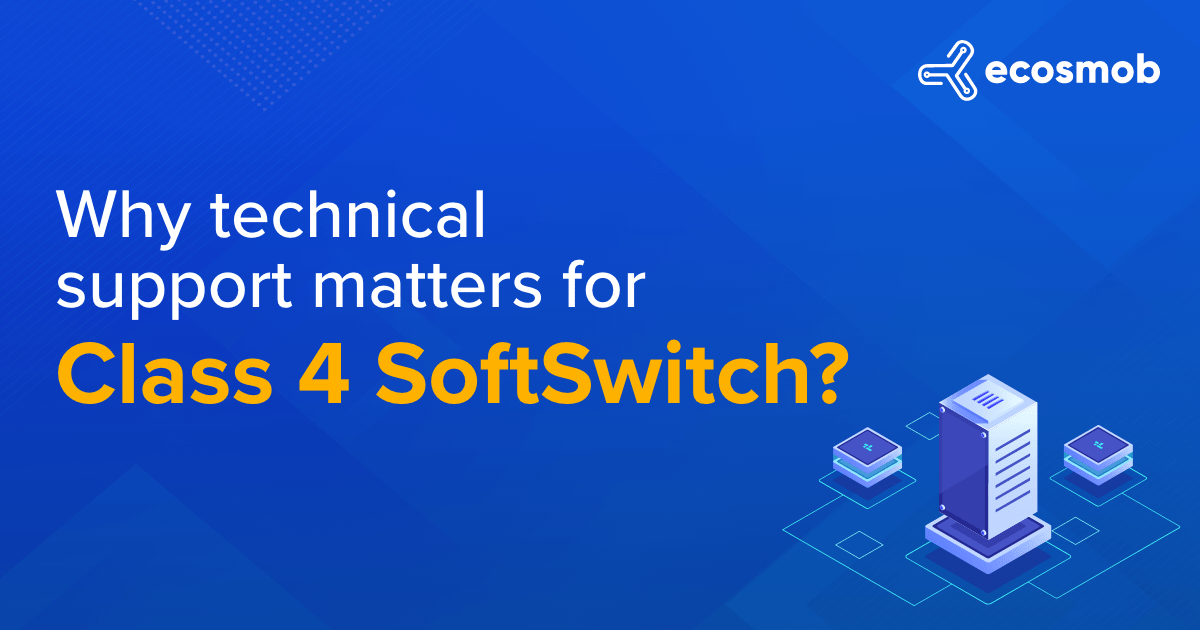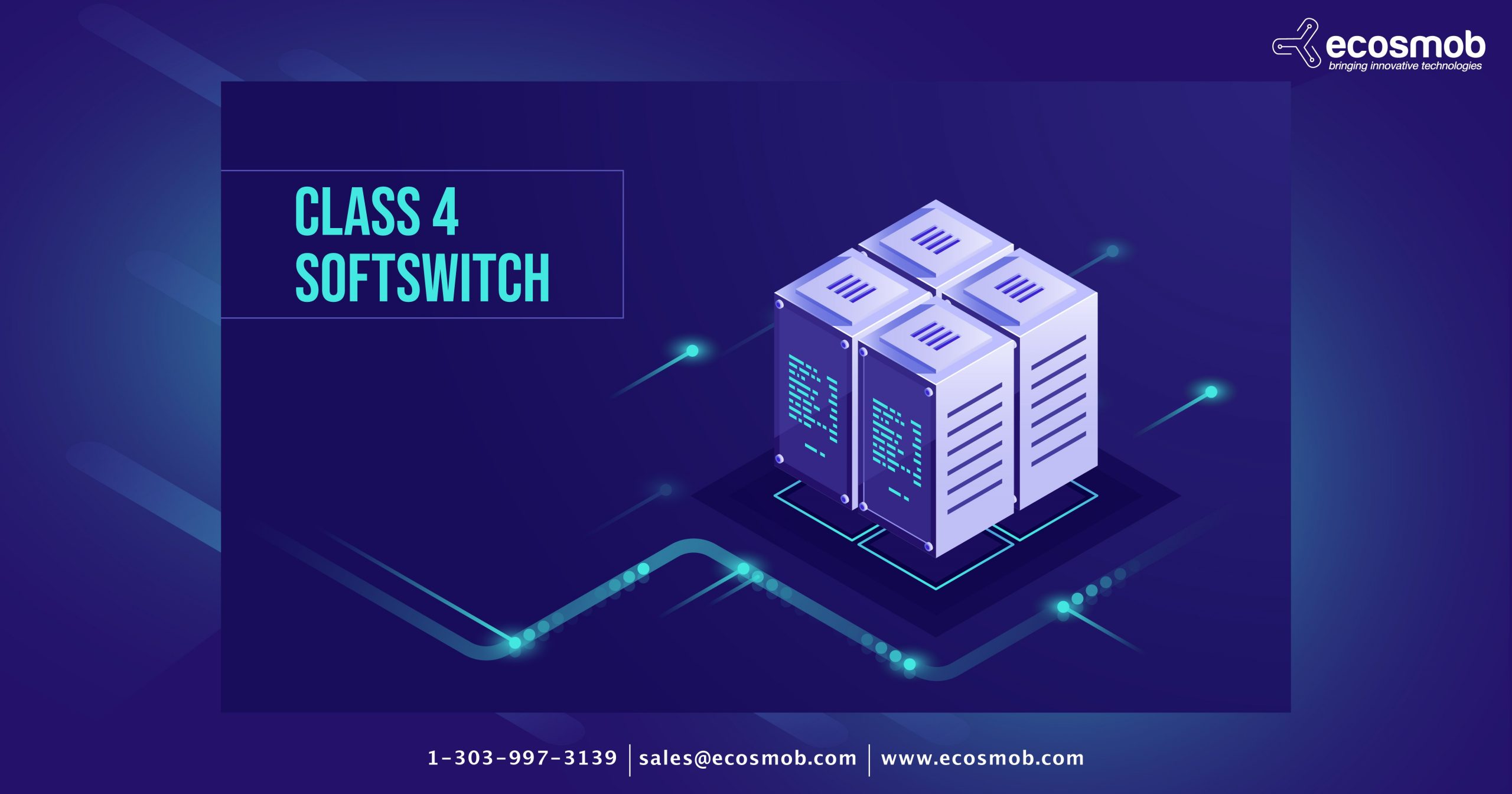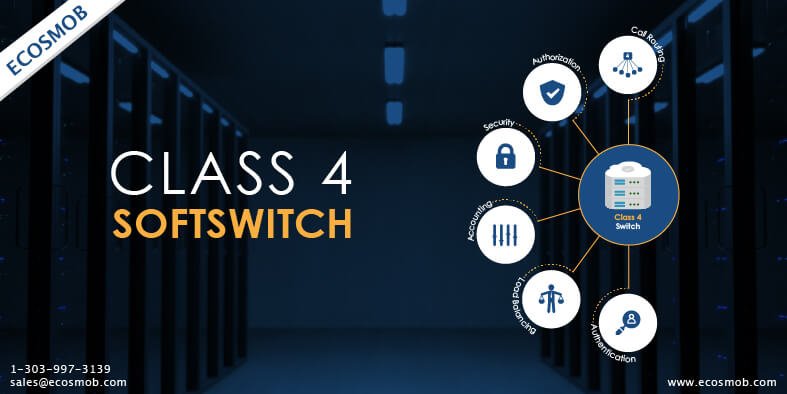QUICK SUMMARY
This blog explains the differences between Class 4 and Class 5 Softswitches in VoIP. It covers their features, use cases, and how they serve wholesale providers or enterprises. Perfect for telecom decision-makers looking to scale VoIP operations efficiently.
With new advancements in IP communication techniques, the VoIP and telecom industries are transitioning through a revolutionary period. The world is coming closer and connecting seamlessly via instant messaging, video calls, and conferencing. This creates a sense of urgency for continuous upgrades in existing VoIP technology. When we talk about VoIP technology, a buzzword that comes to mind is the VoIP softswitch solution.
VoIP Softswitch is a software-based switch that controls calls and directs IP packets to destinations. We can connect with our business associates anytime, anywhere, irrespective of their geographic location.
There are different classes of Softswitches, each of which offers a specific use. Large-scale applications use the first three Softswitch classes (1, 2, and 3). Class 2 and Class 3 Softswitches can connect cities and, in certain situations, entire states, whereas Class 1 Softswitches serve as international gateways.
Two more Softswitches are Class 4 and Class 5 Softswitches. Most telecommunications organisations, particularly VoIP service providers, use customized Softswitch solutions for their benefit.
Now that you have understood the types of Softswitches, let us take a deeper look at Class 4 and Class 5 Softswitch and the difference between them. Thorough clarity of the fundamental difference between these two Softswitches and their specific vital points helps pick the right Softswitch solutions for your business.
Upgrade your VoIP network with the right Softswitch
What Is Softswitch?
A Softswitch is a short form for a software switchboard. It is a software-based device that uses VoIP technology and general-purpose servers to route or connect telephone calls virtually. A Softswitch controls call and processes media on TDM (Time-Division Multiplex) network infrastructure, packet-switched IP (Internet Protocol), and their combination. A Softswitch comprises two components: a media gateway or access gateway for processing media streams and a call agent or call feature server for handling call control, routing, and signalling.
A VoIP Softswitch offers distinct yet cost-effective features like call recording, monitoring, queuing, online faxing, instant messaging, audio, video, and conference calls. Only networks built using Next Generation Network (NGN) architecture or earlier networks can use the Softswitch concept.
Based on the traditional functions in Public Switched Telephone Networks (PSTN), VoIP SoftSwitches are of two types:
- Class 4 Softswitches
- Class 5 Softswitches.
These two types of VoIP softswitches cater to different telecommunication requirements. One serves the wholesale market and offers bulk services, while the other is a retail Softswitch that provides services to end users such as enterprises. In the VoIP-based solution enterprise, Class 4 Softswitches and Class 5 Softswitches are the most widely used terms, yet they are confusing for many.
What Is Class 4 Softswitch?
Class 4 Softswitch is valid for transiting VoIP traffic between carriers. It can route large traffic volumes over and between different exchanges and LATAS (Local Access and Transport Areas).
Let us understand the function of a Class 4 Softswitch through a hypothetical situation: Suppose an end-user wants to initiate a call from Toronto to a Japanese PSTN number. It will route the call to the Japanese PSTN number when a wholesale VoIP service provider receives the transfer order from a Class 5 Softswitch.
Class 4 Softswitch solution receives calls from providers and routes them between the carriers in bulk. That is why VoIP Class 4 Softswitch is also called a wholesale solution. It is perfect for directing traffic between carriers in a way that routes many long-distance calls at a low price. On a provider level, it also links suppliers.
If you’re interested in understanding how Class 4 Softswitches improve long-distance call handling, routing intelligence, and scalability for VoIP providers, don’t miss this in-depth guide. It dives into how service providers can utilize Class 4 features to improve efficiency and cut costs, perfect for anyone planning to expand their telecom infrastructure.
Characteristics Of Class 4 Softswitch
Class 4 Softswitch is vital for long-distance routing. Some of the characteristics of Class 4 Softswitch are –
1. Secure firewall
A Class 4 Softswitch includes a robust firewall to secure VoIP traffic from threats like DDoS attacks, fraud, and unauthorized access. It ensures that long-distance call routing remains safe and compliant with international security standards. This layer of protection is critical for service providers handling large volumes of public traffic.
2. Simple interface
Ease of use is a core advantage of most Class 4 Softswitches. The user-friendly interface allows telecom operators to manage routing rules, monitor call flows, and configure settings without needing deep technical expertise. A simplified UI reduces operational overhead and improves workflow efficiency.
3. Protocol Transcoding
Protocol transcoding enables the Class 4 Softswitch to convert calls between different signaling protocols such as SIP, H.323, or MGCP. This ensures compatibility between different VoIP networks, carriers, or legacy systems. It plays a crucial role in maintaining seamless communication in heterogeneous telecom environments.
4. Concurrent calls
Class 4 Softswitches are built to handle thousands of concurrent calls with minimal latency. This scalability makes them ideal for wholesale VoIP providers and international carriers. The system intelligently manages resources to maintain high call quality during peak traffic times.
5. Flexible UI (user interface)
The flexible UI of a Class 4 Softswitch allows customization to suit the specific needs of service providers. From dashboard layout to real-time reporting views, users can personalize their experience for faster navigation and improved operational control.
6. CDR
Call Detail Records provide in-depth logs for each call, including duration, source, destination, cost, and status. These records are vital for auditing, dispute resolution, and billing. A Class 4 Softswitch generates accurate and real-time CDRs to ensure transparency.
7. Least Cost Routing, and Intelligent call routing
Least Cost Routing helps operators minimize call expenses by automatically selecting the most cost-effective path for each call. Combined with intelligent call routing, which factors in quality metrics and route preferences, this feature improves call efficiency and profitability.
8. Invoicing and Billing
Integrated invoicing and billing features help VoIP carriers automate their financial processes. Class 4 Softswitches often support multi-currency billing, custom rate plans, and automatic invoice generation, ensuring accurate and timely payment cycles for wholesale customers.
9. Support for different protocols
Modern Class 4 Softswitches support various signaling and transport protocols to ensure broad compatibility across diverse network infrastructures. This flexibility allows them to interconnect with global carriers, ISPs, and telecom hubs without protocol limitations.
10. Support for protocol conversion
Protocol conversion enables seamless interaction between networks using different VoIP standards. A Class 4 Softswitch can translate between SIP and H.323, for example, allowing calls to traverse otherwise incompatible networks while maintaining voice integrity.
What Is Class 5 Softswitch?
A Class 5 Softswitch can route calls between end-users or consumers in relatively small areas like cities, towns, and nearby locations within a country, compared to a Class 4 Softswitch. It works with local users and is known as a retail VoIP Softswitch.
Regarding international call routing, a Class 5 Softswitch passes its traffic to a Class 4 Softswitch.
In our example of a call from Toronto to a Japan PSTN number, the retail VoIP Softswitch solution provider transfers the international calls to a wholesale VoIP service provider using Class 5 Softswitch.
Pinless and calling card services allow end users to dial into a local Class 5 Softswitch and use VoIP services instead of publicly switched telephone networks to make calls. Usually, the local telephone communications company’s central office directly serves end-users. A Class 5 Softswitch can also route calls to the IP or SIP address or a DID (Direct Inward Dialling) number of the end-users.
Characteristics Of Class 5 Softswitch
Class 5 Softswitch offers many modern features for enterprises and residential office customers. Some of the main attributes of VoIP Class 5 Softswitch are-
1. Call Authentication
Class 5 Softswitches offer strong call authentication mechanisms to verify user identities before call initiation. This prevents fraudulent usage and protects VoIP accounts from unauthorized access. It ensures only valid, authorized users can access the services.
2. Calling Card Platform, Call Routing, Call Holding, and Call Forwarding
These features are essential for service providers offering prepaid services or advanced call management. Class 5 Softswitches support calling card platforms with PIN validation, intelligent routing, call holding during transfers, and call forwarding to alternate numbers, which are ideal for businesses and residential users alike.
3. Interactive Voice Response (IVR)
IVR allows callers to interact with automated voice menus using DTMF tones or voice commands. It streamlines call handling, reduces human workload, and enhances the customer experience by quickly directing calls to the right department or service.
4. Callback Option
This feature lets users request a callback instead of waiting on hold. It’s particularly useful for reducing customer frustration and improving engagement during high call volumes. Callbacks are often triggered via missed calls, IVR inputs, or web portals.
5. Analog-to-Digital Conversion
Class 5 Softswitches can convert analog voice signals from legacy phones into digital VoIP data packets. This allows traditional devices to function in modern IP networks, helping businesses transition smoothly from PSTN to VoIP.
6. Support for Different Codecs
The softswitch supports multiple voice codecs like G.711, G.729, and Opus, ensuring optimal voice quality and bandwidth usage. This flexibility enables compatibility across networks and devices with varying performance and bandwidth requirements.
7. Media Transcoding
Media transcoding ensures seamless communication between users on different codecs or media formats. It automatically converts voice streams into a compatible format, maintaining high-quality audio while bridging diverse endpoints.
8. Auto-Attendant
An auto-attendant answers incoming calls with a pre-recorded greeting and menu, directing callers without a human operator. This feature improves professionalism, reduces call handling time, and ensures 24/7 availability for businesses.
9. 3-Way Conferencing
Class 5 Softswitches allow three parties to be on the same call simultaneously. This built-in conferencing feature is perfect for team discussions, remote meetings, or collaborative customer support without needing third-party apps.
10. Call Recording
Call recording helps monitor, train, and improve customer service by capturing and storing conversations. Class 5 Softswitches offer on-demand or automatic call recording with secure storage options and playback controls.
11. Voicemail
Users can receive voicemails when unavailable, which are accessible via email, web portal, or phone interface. Voicemail improves responsiveness and ensures no important message is missed during off-hours or busy periods.
12. Call Detail Reports (CDR)
CDRs give comprehensive data on call activities including time, duration, origin, and destination. Businesses use these reports for performance monitoring, dispute resolution, and customer billing.
13. Billing
Integrated VoIP billing systems allow service providers to manage subscriptions, generate invoices, and track payments. Class 5 Softswitches often support flexible billing models such as prepaid, postpaid, or hybrid, with multiple currencies and tax configurations.
14. Basic Dial-Tone
This fundamental telephony feature simulates the traditional phone system experience. It reassures users of system readiness and allows dialpad-based input, making the transition from legacy systems seamless.
15. IP PBX Features
Class 5 Softswitches support IP PBX capabilities like extension dialing, call transfer, voicemail-to-email, and auto-attendant services. These features are essential for modern business communication systems, offering flexibility and cost efficiency.
16. Call Center Services
Call center support includes ACD (automatic call distribution), IVR integration, live call monitoring, and agent performance reporting. These tools help businesses manage large volumes of customer interactions effectively and professionally.
17. Quality of Service (QoS) & Business Groups
QoS settings help prioritize voice traffic over data to maintain call clarity and reliability. The business group feature allows organizations to segment users, apply custom rules, and streamline internal communication.
18. Social Media Usability
Some Class 5 Softswitches offer integration with social platforms like WhatsApp, Facebook Messenger, or SMS apps. This enables omnichannel communication, allowing users to connect via their preferred platforms while managing it centrally.
This growth is mainly driven by the rising use of cloud-based communication systems and the growing need for affordable, feature-rich calling solutions in both homes and businesses.
Difference Between Class 4 And Class 5 Softswitch
Undoubtedly, both the Softswitches, Class 4 and Class 5, play a crucial role in the VoIP infrastructure and work in coordination to route calls, as we have discussed above. However, some undisputable differences between the two are also worth noting.
Here are the summarized differences between Class 4 and Class 5 Softswitch in a tabular form:
| Class 4 SoftSwitch | Class 5 SoftSwitch | |
| Purpose | Class 4 Softswitch interconnects various local exchange carrier offices for long-distance communication in the PSTN. It receives calls from suppliers and routes them between carriers. | Class 5 Softswitch routes SIP, IP address, or a DID (Direct Inward Dialling) across a smaller area. It serves as an exchange in the PSTN that caters to end-users. |
| Intended Customers | A Class 4 Softswitch intends to help carriers and wholesale VoIP Solutions providers, telecom operators, and AI PSTN. | Class 5 Softswitch works with VoIP service providers and end-users. |
| Features and Utility | Class 4 Softswitch has VoIP service provider-based features like cost-efficient and reliable scaling of voice services. | Class 5 Softswitch has a robust platform and offers features compared to Class 4 Softswitch. It offers rich quality IP services to end users and corporate customers, like IP PBX, calling cards, and DID numbers. |
| Capability | Class 4 Softswitches can simultaneously transmit a large volume of calls from Class 5 Softswitches. | Class 5 Softswitches can handle smaller call traffic. |
| Route Area | A VoIP Class 4 Softswitch is a comprehensive solution. It routes a more significant number of long-distance VoIP calls across different networks. | A Class 5 Softswitch does local call routing (between end-users or consumers in relatively small areas like a single city, town, or state) or to a Class 4 Softswitch. |
| Gist | Class4 serves as a wholesale solution. | Class 5 Softswitch serves as a retail solution. |
As you may have acknowledged, there is no case of superiority compared to class 4 and class 5 Softswitch. Both are essential for facilitating seamless communication between various businesses all around the globe. Class 4 and Class 5 Softswitch work together to offer feature-rich, cutting-edge services to enable a smooth connection.
With over 15 years of telecom expertise, Ecosmob ensures modular, scalable, and secure deployments backed by intelligent features like real-time billing, call analytics, and protocol compatibility. You get flexibility without compromising on performance.
Our team of passionate VoIP software developers at Ecosmob Technologies provides affordable custom VoIP Softswitch solutions. Contact us to discuss your needs, and we will offer you a specialized VoIP Softswitch solution to expedite your company’s growth and increase ROI.
Contact Us Now.
Learn which VoIP Softswitch suits your business best
FAQs
What is a Class 4 Softswitch used for?
Wholesale VoIP providers use class 4 Softswitches to route large volumes of long-distance VoIP traffic between different carrier networks.
What is a Class 5 Softswitch used for?
Class 5 Softswitches are designed for VoIP service providers and enterprises to manage local or regional call services for individual end-users.
What are the key features of a Class 4 Softswitch?
Class 4 Softswitch features include protocol transcoding, intelligent call routing, least cost routing, billing, and support for concurrent calls.
What are the main features of a Class 5 Softswitch?
Class 5 Softswitches offer IP PBX, voicemail, auto-attendant, IVR, call forwarding, 3-way conferencing, and billing tools for retail telecom services.
Which is better: Class 4 or Class 5 Softswitch?
Neither is inherently better; Class 4 is ideal for bulk, long-distance traffic, while Class 5 is essential for delivering services to end-users.



